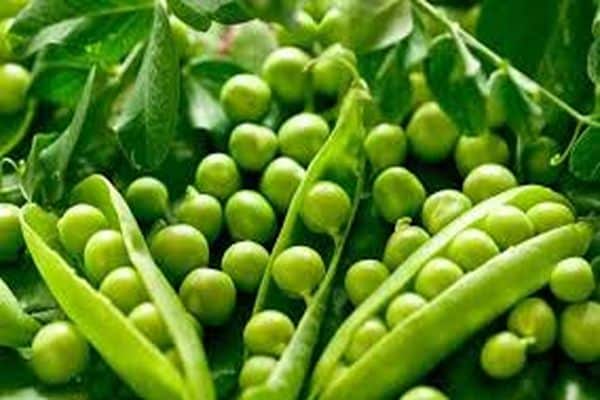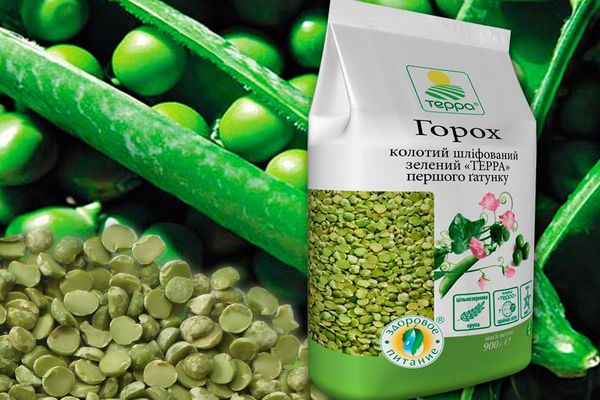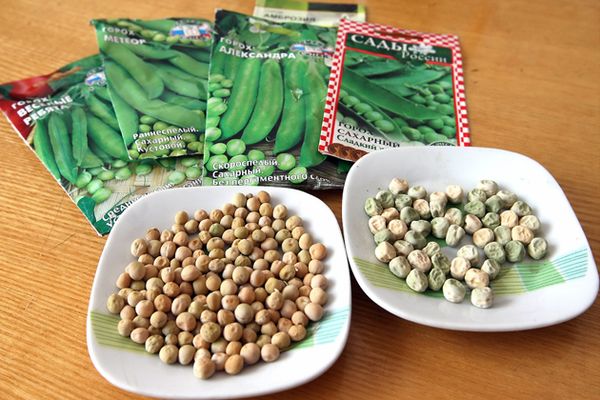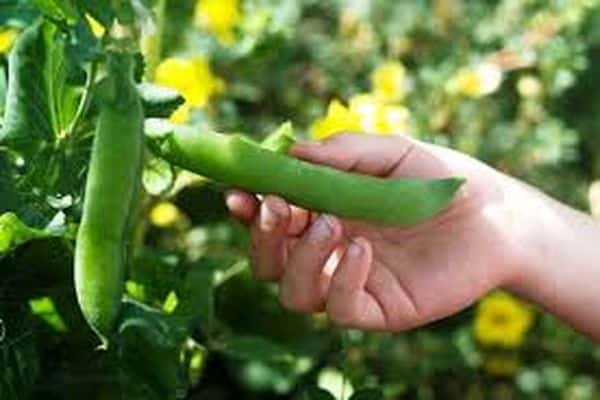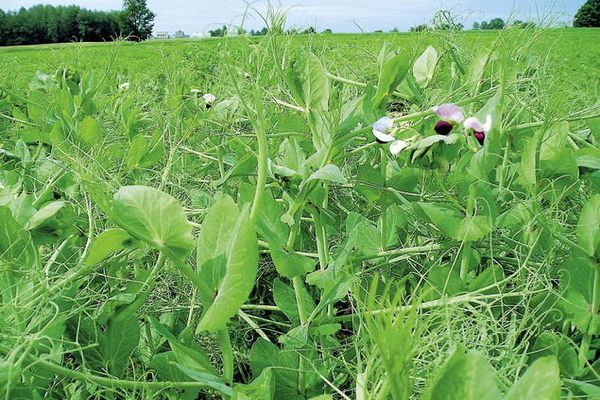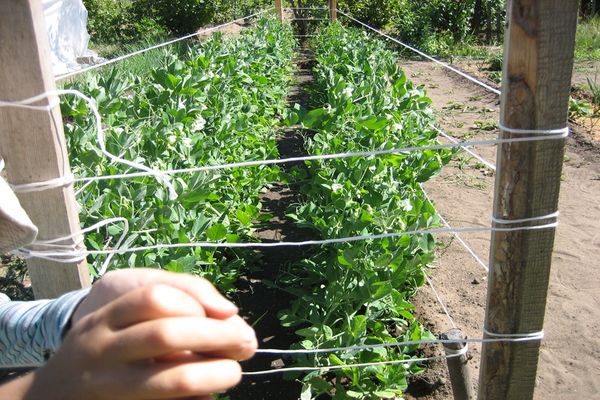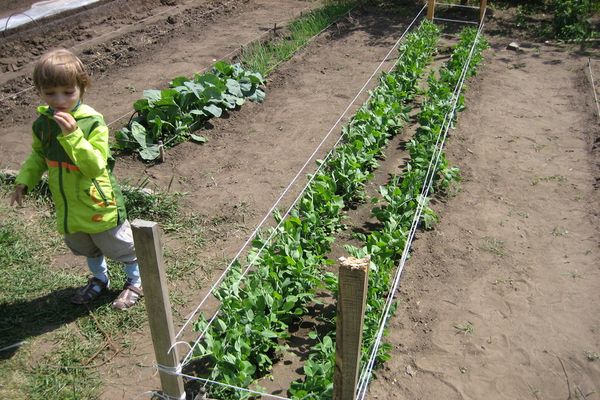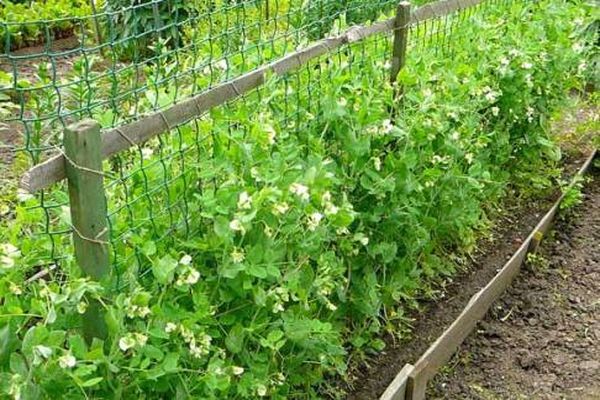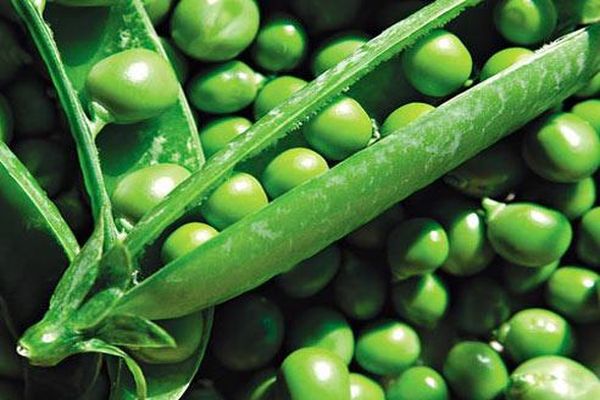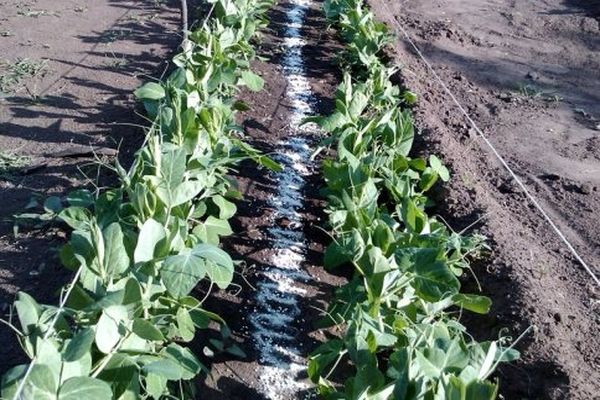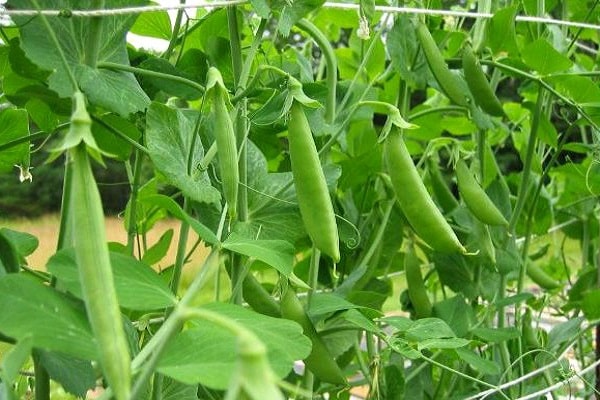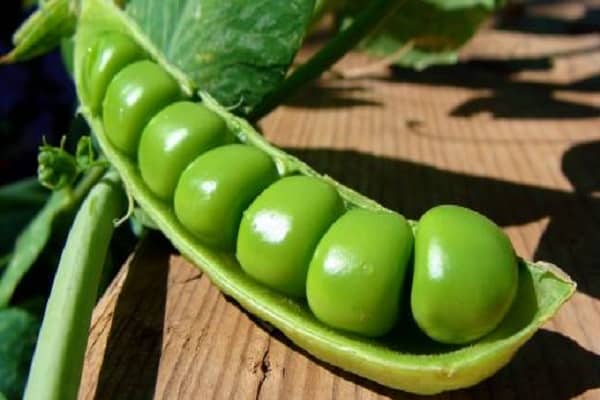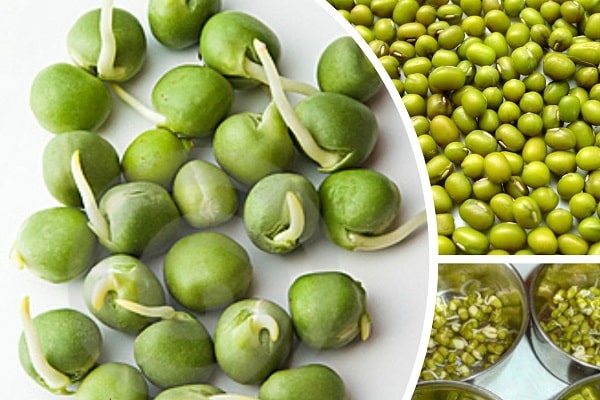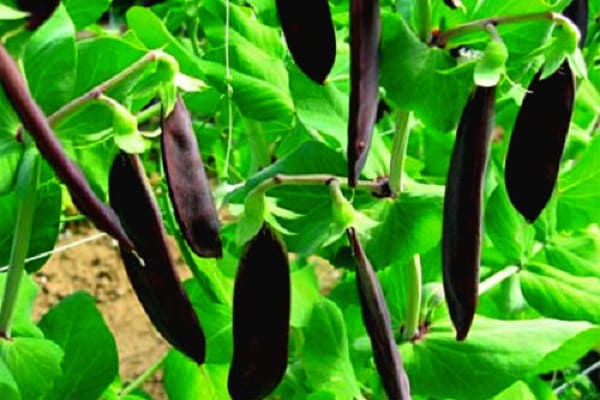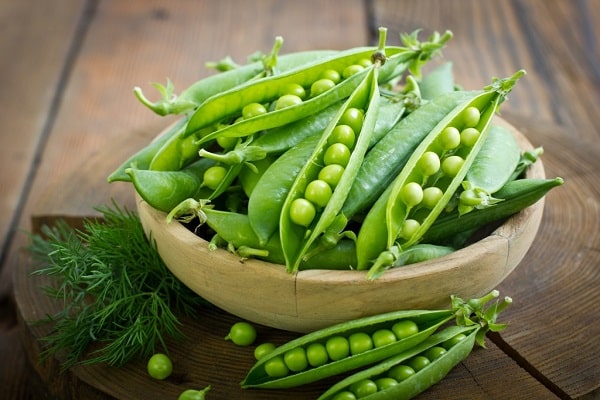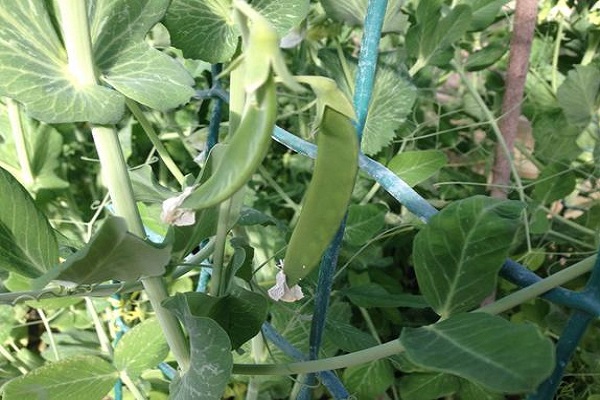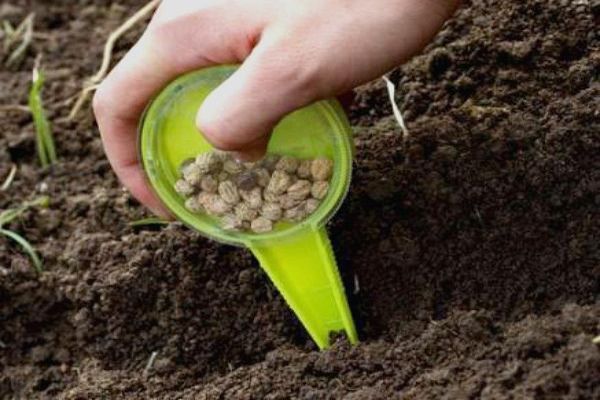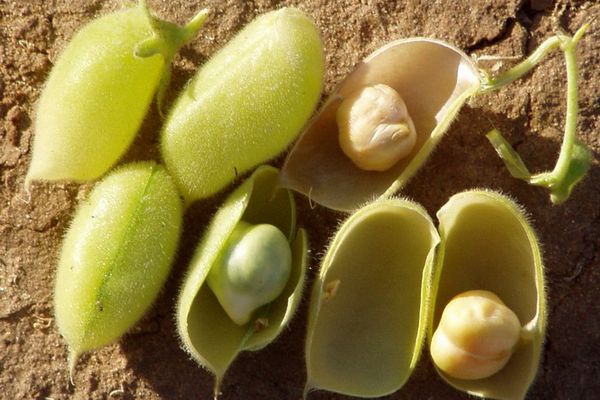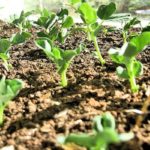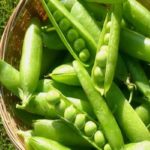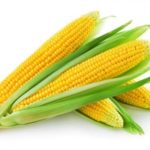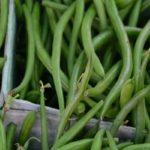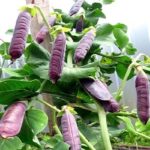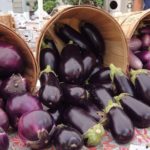Almost everyone who has a plot of land plants pea seeds. Peas contain a lot of sugar and protein, everyone loves to eat them. Caring for the crop is not difficult, the main thing is to choose the right variety and prepare planting material. There are many classifications of what peas are. It may differ in shape, timing of crop ripening, and direction of use. According to the type of growth, the plant can be tall, standard, lodging.
- Variety selection
- Brain varieties
- Kelvedon miracle
- Large pea seeds
- Prelado
- Sweet peas for planting
- Sugar
- Oscar
- Zhegalova
- Slider-Sugar
- Baby sugar
- Peas growing without support
- Alpha
- Avola peas
- Peas
- Dakota
- Fork
- Adagumsky
- Voronezh green
- Dinga
- Tall
- Madonna
- Rocket
- The best varieties for the Moscow region
- Moscow delicacy
- Slovan
- Salamanca
- Gothic
- Belmondo
- Suitable varieties for Siberia
- Altai emerald
- Ambrosia
- Seed preparation
- Soaking before planting
- Features of growing peas at home and in the ground
Variety selection
Peas belong to herbaceous annual plants of the legume family. Like all legumes, it enriches the soil with nitrogen, so it is recommended to plant other crops after it. Depending on which variety of green pea seeds was chosen, the stem may be lodging or bushy, simple or branching. The stem of different pea varieties can reach different heights. A tall variety of crop can reach a height of up to 2.5 meters.
Different types of peas differ in size and color. The color can be dark or light green; there is also a variety with a bluish color.
Each bean can contain up to 10 seeds. They also differ in shape and color. The peas inside the bean may be round or angular in appearance, and the surface may be wrinkled or smooth.
All varieties of peas are divided into three large groups:
- Seeds of the hulling group are used for canning, drying, and freezing. They boil well and make good soups and porridges. But they are not eaten fresh.
- Sugar snap pea seeds are sweet and tender. They are eaten unripe. As they ripen, they lose moisture and become wrinkled. This type of vegetable is more difficult to grow. It is picky about the composition of the soil and watering, often gets sick and is attacked by pests.
- Brain vegetable varieties are distinguished by wrinkled, square seeds. They are low in starch but high in sugar.
In addition to these characteristics, attention is also paid to the timing of seed ripening. The growing season of early plant varieties lasts 45–60 days, mid-season varieties last 60–80 days, and late-season plants begin to ripen in 80–90 days.
Brain varieties
Brain pea varieties are distinguished by the fact that at the end of the growing season or during heat treatment, the seeds acquire a wrinkled surface. They accumulate very little starch, contain a lot of vitamins and glucose, so the taste is excellent. Varieties of this group are used for preparing salads and canning.
Kelvedon miracle
An early-ripening, productive pea variety is the Kelvedon Miracle. The growing season lasts 50 days. The stem grows up to 70 cm. During cultivation, it is advisable to tie the stem to a support. The pods are oblong (up to 8 cm) and contain 6–8 dark green fruits.
The plant belongs to the brain pea varieties and has a sweet, juicy taste. Resistant to diseases and adverse weather conditions. The variety requires care. The soil needs to be loosened, fertilized and watered in a timely manner. Do not allow the soil to dry out, otherwise the yield will decrease significantly.
Large pea seeds
Varieties of large peas delight with their size and taste. The length of the pod can reach 15 cm. These varieties include: Emerald, Gribovsky 11, Russian size F1. During cultivation, special requirements are placed on fertilizers. Even if a low-growing variety of peas was planted, you need to install a support so that the stem does not break under the weight of the beans.
Prelado
The peeling, high-yielding pea variety Prelado gives a consistently high yield, even if the care rules have not been sufficiently followed.Refers to early ripening plants; from the moment of emergence of seedlings to the stage of maturity of peas, an average of 90 days pass.
The variety belongs to large varieties of peas, exhibits high resistance to diseases, especially fusarium and powdery mildew, and also tolerates hot weather well. The stem grows up to 65 cm.
The length of the pod is 10 cm, it contains 7 large peas larger than 10 mm in size. During cultivation, it is enough to water on time, loosen the soil and apply fertilizer twice.
Sweet peas for planting
Sugar varieties have a sweet and juicy taste due to the high sugar content in their composition. They can eat the entire shoulder blade without removing the peas, since there is no parchment layer. The peas are not very large, but have high taste. Popular varieties of sweet peas for planting: Sugar, Zhegalova, Gigant, Children's Sugar, Oscar, Vera, Salute.
Sugar
Grow sugar snap peas simply, since it does not have any special care requirements, it grows in any soil. Most varieties are cold-resistant, light-loving, and require regular watering. You can plant after cabbage and cucumbers.
Sugar peas 2 are early ripening varieties. The pods grow up to 10 cm in length, have a soft and juicy structure, without coarse fibers, therefore they are also used as food. The beans are bright green in color, round in shape, the surface is smooth and even.
The Sugar variety withstands disease and cold. When the air temperature drops, development does not stop, but it slows down. The yield is high, and many sweet peas are formed in the pod.
Oscar
The Oscar pea variety will be pleased with its high yield. Refers to plants with early bean ripening time, they can be collected after 68 days. Stem height 75 cm.The pod is 9 cm long and contains 12 dark green beans.
The plant is disease-resistant and is especially rarely affected by Fusarium wilt. If fertilizers were applied before sowing the seeds, then further fertilizing is not required.
Sugar snap pea seeds are ideal for canning, but can also be eaten fresh. They contain many vitamins, so the benefits are combined with a pleasant sweet taste.
Zhegalova
Peas of the Zhegalova 112 variety belong to the sugar, mid-season groups of vegetable crops. The growing season lasts 60 days. High yields can be collected from 1 sq. m up to 1.5 kg of harvest. The stem is simple, stretches up to 170 cm. The peas have fleshy, juicy, sweet pulp. Each pod, 10–13 cm long, contains up to 8 seeds.
Growing this variety of sweet pea is recommended in open ground. It is better to plant in sandy and loamy soils. Care consists of timely loosening and watering of the soil.
Slider-Sugar
Leafless peas Slider-Sugar have early fruit ripening periods. The growing season lasts on average 58 days. The plant grows up to 75 cm and does not require tying to a support. The peas can be eaten with the pod. The pod contains 8–9 sweet, light green, slightly curved, elongated seeds.
Baby sugar
The children's Sugar Pea variety will delight you with its high yield, ease of care and sweet taste. The height of the stem reaches 95 cm. The plant belongs to the mid-season group; harvesting begins after 60 days. The length of the pod is 9 cm. Up to 8 dark green seeds with a high protein content (up to 25%) are formed in the pod.
The vegetable crop is characterized by average resistance to some diseases. Shows resistance to lodging, ascochyta blight and root rot.Withstands spring frosts at night, does not impose special conditions for watering and fertilizing.
Caring for Children's Joy peas is standard and consists of timely watering, applying mineral and organic fertilizers and loosening the soil. Since the stem is tall and many pods are formed, a support should be installed.
Peas growing without support
Support for tall pea varieties required. For medium-sized and short plants, the support may not be installed, but the procedure significantly increases the yield. This allows light and air to reach all parts of the plant without obstruction.
Plants whose stems do not exceed 70 cm are classified as low-growing. During their cultivation, tying to a support is not required. The bushes, clinging to each other, do not fall to the ground. Peas, which do not require support, are in particular demand among ordinary gardeners. The variety Tsarevich, Varis, Vera, Ambrosia, Grandmother's Surprise, Little Miracle can be selected.
Alpha
The Alpha pea variety is distinguished by stable, high yield and early ripening. The fruits begin to ripen after 52 days. The height of the plant is 55 cm, the stem is powerful, so no supports are required. Some gardeners still install supports, which has a positive effect on the amount of harvest. The pod is 8 cm long and produces up to 9 dark green beans. The seeds contain a lot of protein and vitamin C.
The variety is resistant to frost and diseases, especially ascochyta blight and fusarium blight. During care, you need to set the watering regime; adding fertilizers is not necessary if they were applied during the pre-sowing period.
Avola peas
Among the shelling, early-ripening varieties of peas is the Avola variety.From the appearance of the first shoots to fruiting, 55 days pass. It is possible to obtain a high and high-quality harvest under any climatic conditions. Shows high resistance to diseases, especially fusarium. The dark green peas in the pod are large, most of them measuring 8 mm.
The height of the plant is small, reaching 50 cm, so it is grown without support. Care involves loosening and watering the soil, especially during flowering and fruiting.
Peas
The round-shaped seeds of shelling peas are distinguished by their high starch content and calorie content. They are used to prepare soups and porridges.
They begin to harvest this vegetable when the pod is still green and the peas have reached their size. An overripe bean becomes dull white and loses its taste.
Dakota
The shelling type of Dakota peas produces a consistently high yield, even if weather conditions are not favorable. Plant height is 65 cm. Fruit ripening occurs after 55 days. The length of the pod is 8 cm, it contains up to 8 green beans, medium size.
The plant is resistant to many diseases characteristic of legumes, especially fusarium and powdery mildew. The harvested crop does not age for a long time and does not lose its taste. Care does not require a special approach. It is enough to carry out loosening, watering and fertilizing in a timely manner.
Fork
Peas of the Kamerton variety have the following characteristics: a mid-season, leafless plant, resistant to diseases, shedding and lodging. Plant height 120 cm. The beans are light green in color, shelled type.
Adagumsky
For mid-season Adagum peas, the growing season lasts 68 days.The height of the plant is 75 cm; during cultivation, no additional support for tying is required. The beans are round with a pointed tip, dark green in color, up to 7 cm in length. Up to 8 dark green grains are formed inside.
Voronezh green
Voronezh Green peas belong to the shelling type with a short growing season, which lasts 45 days. Productivity is high. Stem height 80 cm, no garter required.
The plant is characterized by good resistance to diseases, especially white rot and ascochyta. It does not have any special care requirements, tolerates frost well, and the fruits ripen early and smoothly.
Dinga
The mid-season pea variety Dinga belongs to the German selection. It takes 60 days from full germination to ripeness. The stem is simple, stretches up to 90 cm. The length of the pod is 11 cm, with a pointed end. Inside there are up to 11 dark green peas.
Among all varieties of peas, it is characterized by high yield and resistance to diseases, especially fusarium. For planting, it is better to choose sandy and loamy soils. It especially needs watering during flowering and fruit formation.
Tall
Tall varieties are considered to be those whose stems extend above 115 cm. The stems of some plants can grow up to 2.5 meters. They are difficult to grow, but you can get a rich harvest. A special feature of cultivation is the installation of support after the appearance of 3-4 leaves. Seeds cannot be planted densely, as they require light and heat. If there is little sunlight, the stem lies down, stretches and becomes brittle.
Good pea seeds for open ground are: Zhegalova 112, Alderman, Telegraph, Miracle Shovel, Sugar Snap.You can choose medium-growing varieties, their stem height is above 70 cm: Azart, Voskhod, Emerald, Madonna, Horn, Giant.
Madonna
German breeders created Madonna pea seeds. They are characterized by high yields and average fruit ripening times. The period of technical ripeness lasts 70 days.
The height of the half-leafless plant reaches 80 cm. The pods are light green, slightly curved in shape with a blunt end. Resistance to shedding is average, but the variety resists diseases, drought and lodging well.
Rocket
In the description of the Rocket pea variety, it is noted that the plant belongs to the high-yielding type of mustachioed form. The height of the plant is average, 60-90 cm.
The variety is moderately resistant to ascochyta blight, mold gray rot, and is resistant to lodging and shedding. Rocket pea seeds are responsive to nitrogen and potassium fertilizers. Nitrogen fertilizers should be applied only when necessary.
The best varieties for the Moscow region
The Moscow region has a temperate continental climate. The weather is not stable. Summer can be rainy or, conversely, dry. Therefore, it is necessary to select varieties that are resistant to adverse weather surprises.
Pea varieties for the Moscow region for open ground: Valentiy, Orion, Ryabchik, Sputnik, Novator, Flora and many others.
Moscow delicacy
Medium-late ripening periods for shelling peas Moscow delicacy. The bush grows small, height 75–80 cm, so no garter to a support is required. From the moment the first shoots appear until technical ripeness, 80 days pass. The length of the pods is 7 cm, they contain 7–9 large peas.
Average resistance to diseases and pests. Chernozem soil, where potatoes or cabbage used to grow, is better suited for growing.
Caring for crops includes irrigation, loosening, fertilizing and carrying out preventive treatments against diseases and pests. Harvesting begins 30 days after the start of flowering.
Slovan
The leafless pea variety Slovan is a high-yielding crop with early ripening. The growing season lasts 90 days. The height of the plant is 110 cm. It is better to tie the stem to a support, this will allow you to reap a larger harvest and prevent it from breaking.
Does not impose requirements on soil composition and predecessors. The length of the pod is 9 cm, each contains 5–6 medium-sized grains. The variety is characterized by resistance to drought, lodging, and diseases. There is a high resistance to ascochyta blight, anthracnose and root rot.
Salamanca
The description of the Salamanca pea variety consists of a large list of positive qualities. With good watering, high yields and smooth fruit ripening. Resistance to lodging and shedding and characteristic diseases is noted. The growing season lasts 70 days. Plant height 80 cm.
Gothic
It is proposed to study the description of the Gothic pea variety. A productive variety with a high protein content in grains. It is drought-resistant, therefore suitable for southern regions, does not lie down and does not crack. The variety is unpretentious to growing conditions.
Plant height 85 cm. Pod length 9 cm. The number of grains in a bean is approximately 7–9 pieces. The taste is good. If you follow the rules of watering and fertilizing, the seeds will be juicy, sweet with delicate skin.
Belmondo
The high-yielding pea variety Belmondo mustache type in the description has other positive aspects. The pea stem is simple, the plant height is average and is 80 cm. The variety tolerates cold and drought well, is resistant to lodging, shedding and cracking.Subject to infection with ascochyta blight and powdery mildew.
Suitable varieties for Siberia
Peas are an unpretentious crop that grows well even in Siberian conditions.
Western Siberia has a mild climate. Temperatures in summer can reach 35 degrees. Here you can grow the following varieties of legumes: Altai emerald, Sugar pod, Henry, Miracle of Kelvidon.
The best varieties of peas for the Urals: Alpha, Berkut, Vega, Children's sugar, Sprinter, Voronezh green.
Altai emerald
The Altai emerald pea variety is considered tasty. The harvest is rich and of high quality; it begins to ripen after 54 days. The stem length is 48 cm, the pods are slightly curved, 9 cm long. The peas are large and sweet, containing a lot of protein and sugar.
Like all legumes, the variety does not tolerate fresh organic fertilizers. Prefers sandy and loamy soils. During cultivation, it requires abundant watering, especially during flowering and ripening of beans.
Ambrosia
The vegetable sugar pea variety Ambrosia is an early ripening plant. From the appearance of the first shoots to fruiting, 50 days pass. The height of the stem reaches 70 cm. The yield of the variety is high. To harvest the largest possible harvest, it is advisable to install a support.
The plant is unpretentious; basic care is required in the early stages of vegetable development. Each pod contains up to 8 peas, which have high taste.
Seed preparation
To increase productivity and reduce the risk of disease development, pre-sowing treatment of planting material is carried out. The procedure is the same for all varieties of peas:
- To ensure that all the seeds germinate at the same time, they are heated.The seeds are placed in a fabric bag and heated for 1.5 hours. For this purpose, the bag can be moved to any warm place, for example, tied to a radiator.
- Before planting, seed material is selected. Pour the seeds into a glass of salted water (60 g of salt per 1 liter). Those that float are thrown away. The seeds remaining at the bottom are washed and dried.
Some vegetable growers believe that soaking and germinating pea seeds is not recommended. This condition is especially important for brain types of culture. This will protect the seedlings from nighttime drops in air temperature. If the seeds are germinated, the young roots will freeze and die. Dry seeds are planted in moist soil to a depth of 5 cm.
Proponents of seed germination argue that germinated seeds germinate faster and the process has a positive effect on the condition of future seedlings.
The best varieties of peas are: Telephone, Oscar, Ambrosia, Alpha, Dinga, Prelado, Berkut. All of them, with minimal care, give a good harvest.
Soaking before planting
First, before soaking, the vegetable seeds need to be sorted. Suitable for planting: full-bodied, whole, undamaged pests of peas. You can soak it in special solutions or simply pour the selected seed material with regular warm water.
For complete swelling, 14 hours are enough. At the same time, it is recommended to change it to new water every three hours. After soaking, the seeds are distributed on a dry fabric surface and dried slightly.
It is useful to keep the peas in special solutions for the first three hours, which will make the plant healthy, strong, and resistant to diseases. Popular drugs for diluting the solution include: Epin, Humate, Nitragin.
To disinfect pea seeds of different varieties, they can be placed for 15 minutes in a weak solution of potassium permanganate.
Features of growing peas at home and in the ground
Knowing some secrets and choosing the right variety, you can grow peas at home. Pea varieties that are suitable for growing at home: Excellent 240, Viola, Zhegalova 112, Vega, Voskhod, Vera, Inexhaustible 195, Adagumsky. Caring for and growing a plant at home and outdoors has much in common.
The seeds of the selected pea variety are selected, soaked and germinated. Healthy peas are kept for 20 minutes in a weak solution of potassium permanganate, then soaked for 4 hours in warm water and dried. After this, the seeds are distributed on a well-moistened cloth surface and covered with another damp cloth layer. After 4-5 days, the beans should germinate.
Germinated seeds are planted in containers with prepared soil. Make holes 2 cm deep at a distance of 2 cm. The interval between rows is about 8 cm. One pea is placed in each hole with the sprout facing up. The top is lightly covered with soil. After sowing, the box is covered with film. After 10 days, the first shoots appear and the film is removed. As soon as two true leaves unfold, the picking procedure is carried out.
Peas are a light-loving plant, so additional lighting is provided. Before flowering, water the plant 1-2 times a week. As soon as it begins to bloom and form fruits, watering is increased to 3-4 times. After germination (when the sprouts reach 13 cm in height), it is advisable to provide a support. A liquid solution based on superphosphate and potassium salt is suitable as a fertilizer.

